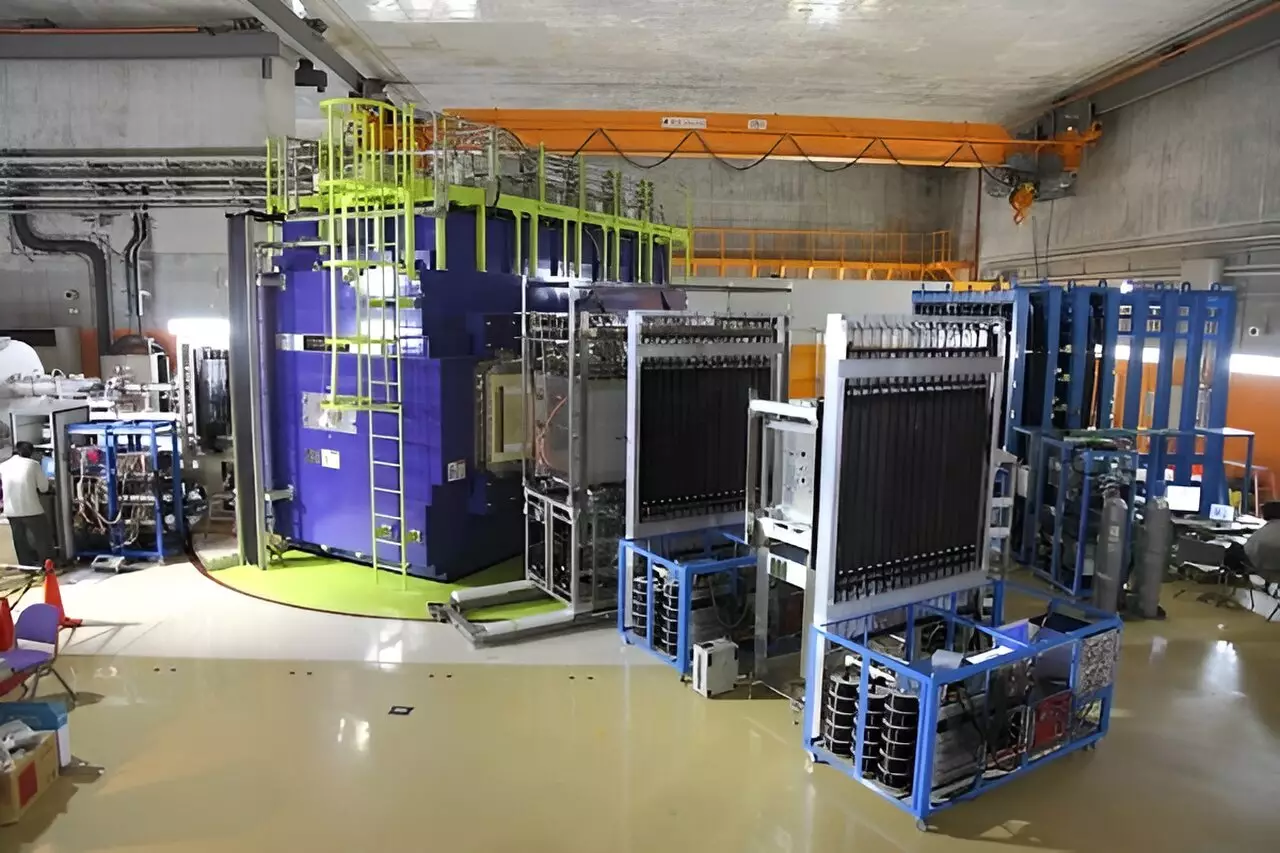Recent experiments conducted by the SAMURAI spectrometer team at RIKEN’s RI Beam Factory (RIBF) in Japan have resulted in the groundbreaking detection of a rare isotope of fluorine, designated as 30F. This discovery is not just a fleeting moment in nuclear physics; it offers a rich avenue for investigating unusual nuclear structures and the underlying principles that govern atomic behavior. The collaboration, known as SAMURAI21-NeuLAND, comprises a diverse group of researchers from RIKEN, GSI-FAIR, TU Darmstadt, and other global institutions, all united by a common goal: to delve deeper into the enigmatic world of nuclear isotopes and their unique properties.
Exploring the Limits of Nuclear Existence
The team’s investigation into 30F’s characteristics, particularly its nuclear structure and neutron separation energy, has provided valuable data that has implications far beyond the realm of isotopes. The findings imply the presence of a superfluid state within the neutron-rich isotopes 29F and 28O, highlighting how these unusual phases challenge existing nuclear theories. As Julian Kahlbow, the corresponding author, notes, their research pushes the boundaries of what we understand about nuclear stability and structure. “We are exploring the most neutron-rich nuclei on the chart of nuclides, pushing the boundaries of existence,” he stated.
Within the study, a critical focus is placed on the identification of nuclear “magic numbers,” specific neutron counts that typically signify a more stable configuration. The findings now suggest that the well-established gaps in energy may not apply under extreme conditions, specifically at a neutron number of N=20, indicating a need to reassess previously held beliefs in nuclear structure.
Challenges of Measuring 30F
Despite the excitement surrounding the detection of 30F, the isotope’s fleeting nature presents a significant hurdle for physicists. With a lifespan of merely 10-20 seconds before it decays, direct measurement of this isotope poses formidable challenges. The SAMURAI21 team utilized innovative methodologies to indirectly reconstruct the properties of 30F through its decay products, 29F and a neutron. By measuring the interactions and decay outputs, researchers pieced together the characteristics of this elusive isotope.
Employing advanced techniques, including the creation of an ion beam containing 31Ne, the team effectively traced the origins of 30F. The experiment showcased state-of-the-art technology and expertise, emphasizing the collaborative effort necessary to unlock the secrets hidden in the neutron-rich regions of the nuclide chart.
Insights into Superfluidity and the Nuclear Landscape
The research findings reveal a surprising twist: the potential for 30F, along with 29F and 28O, to exist in a superfluid state. Such a state, rarely observed among isotopes, suggests a novel configuration where neutrons, rather than existing far from each other, may form pairs and occupy overlapping energy levels. This pairing could lead to phenomena reminiscent of Bose-Einstein condensates, fundamentally altering our perception of nuclear states in weakly bound systems.
“In our work, we propose superfluidity for the first time at the edge of stability in weakly bound systems,” Kahlbow remarked. The implications of this discovery extend beyond isotopic curiosity, as they could provide insight into the complex interactions at play in exotic nuclear models.
Looking to the future, the SAMURAI21/NeuLAND collaboration aims to build upon their findings by conducting further experiments that explore the nuances of neutron correlations and the structural dynamics of pairing within these isotopes. Kahlbow expressed excitement about the next steps, indicating a desire to assess the characteristics of neutron pairs in both 28O and 29F, as such studies could lead to significant advancements in the understanding of neutron-rich nuclei.
Moreover, the possibility that 29F and 31F may function as halo nuclei, with one or two neutrons orbiting far from their respective nuclear cores, warrants serious attention in upcoming research. Investigating these concepts could illuminate the surprising structures and behaviors that exist in isotopes along the fluorine chain, ultimately contributing to our broader knowledge of nuclear physics.
The groundbreaking results from the SAMURAI21/NeuLAND collaboration signify not just a step forward in experimental nuclear physics but also a deeper dive into the fundamental mechanisms that govern atomic behavior. As researchers continue to unravel the mysteries behind isotopes like 30F, the potential for new discoveries looms large, revealing the intricate tapestry of nuclear interactions. The advances made at RIKEN not only enhance our understanding of nuclear structure but also challenge our current theories, promising an exciting future for physics and its quest to decode the universe’s complexities.


Leave a Reply